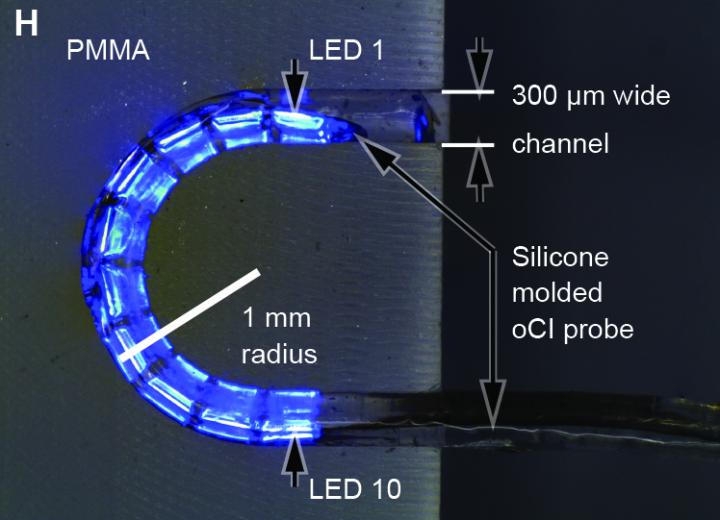Apart from helping to improve eyesight, LED light is now used to restore hearing, according to a new study conducted by University of Göttingen, Germany.
The scientists created an optical cochlear implant based on LED lights that can safely and partially restore the sensation of hearing in deaf rats and gerbils. Their design's light-based approach allowed it to deliver more accurate and pinpointed signals to auditory nerves compared with current implants based on electricity, which often suffer from poor sound quality. The technology also offers some improvements over previous experimental optical implants, suggesting it could boost the clinical viability of cochlear implants to treat hearing impairment.

(Image: D. Keppeler et al., Science Translational Medicine (2020))
Results of the study was published in Science Translational Medicine, titled “Multichannel optogenetic stimulation of the auditory pathway using microfabricated LED cochlear implants in rodents.”
Cochlear implants are biomedical devices that can partially restore hearing in patients with hearing loss, which affects approximately 5% of people worldwide. Most cochlear implants reproduce sound through the use of electrode contacts, but the resulting electrical stimulation is not very specific and tends to spread over a large area of nerves, leading to less detailed sounds and lower-quality hearing.
Daniel Keppeler and colleagues instead turned to optical cochlear implants, an alternative class of designs that use light instead of electricity to stimulate sound-sensing neurons after genetically modifying those neurons to respond to light. Unlike other implants, their wireless device uses multiple stimulation channels, and integrates power-efficient chips of blue LED lights to activate modified neurons inside the cochlea.
The scientists confirmed that the device generated more selective signals than prior designs when implanted into deafened rats and gerbils, and the animals successfully navigated sound-based behavioral tests over the course of several weeks. The team noted that more work is needed to address the device's large size and broad spread of light before it can be tested in clinical studies.





 CN
TW
EN
CN
TW
EN






